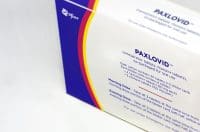Falling salaries mean bottom line improvement for hospitals.
Throughout the past 2 years, traveling nurses received extensive attention for the generous compensation they received in exchange for a willingness to move about the country during the COVID-19 pandemic.
Nurses willing to pack up and go from coast-to-coast—or anywhere in between—found themselves compensated to the tune of as much as $10,000 per week during the height of the Delta and Omicron variant outbreaks.
It appears, however, that salaries are beginning to stabilize. Last week, the Wall Street Journal reported that numerous providers, including HCA Healthcare, reported a drop of up to 22% in temporary staffing expenses during the second quarter of 2022.
What’s good news for companies like HCA is bad for providers of temporary medical staff, such as Cross Country Healthcare and AMN Healthcare Services, who saw shares fall 17% and 11% respectively.
But where are salaries headed long-term? The bubble created by the pandemic may be retracting, if not bursting, but travel nursing revenue has more than doubled over the past 5 years. While figures like $10,000 a week were never going to be a permanent change, one analyst believes the number may drop as low as $3,000 per week in the near future.
But the travel nursing phenomenon is likely here to stay for the short- and medium-term future. The increased flexibility in remote working throughout the American workforce means nurses with spouses and families can bring their loved ones along with them on travel assignments, removing one of the biggest impediments.
Even if the bubble bursts, the nursing shortage remains very real. Hospitals looking to reset their budgets in the post-pandemic landscape may have to reconsider pay structures for nurses if they hope to solve the overriding problem moving forward.
SOURCE: Wall Street Journal


















